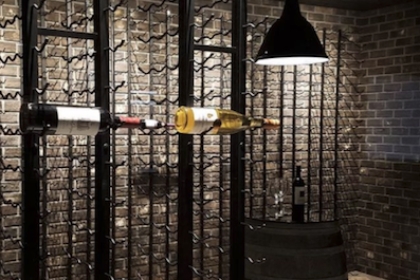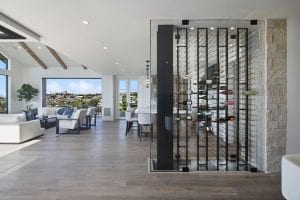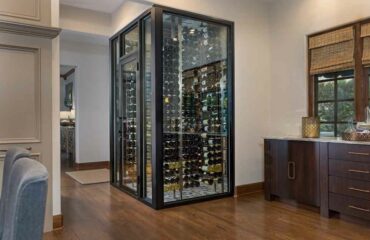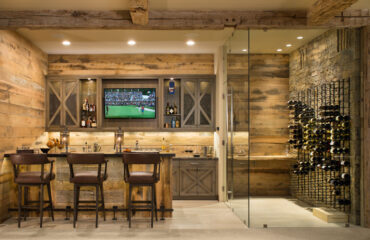Three Types of Wine Cellar Cooling Units, and When to Use Each

The world of wine cellar cooling can seem, frankly, as complex as understanding the grape-growing regions and bottling clarifications of Italy. Which is to say, “headache inducing.” There are a number of considerations in terms of room design, insulation, types of wine cellar cooling units, level of humidity and more. Before you get that far, however, you’ll need to pick a style of cooling unit. Here are the three primary options, and why you should consider each.
Self Contained
Picture the air conditioning unit in your window. Self-contained wine cellar cooling units look and install in a very similar manner. Simply ensure you can cut a large enough passthrough in the wall to install, have the proper electrical hook up for it, and plan on a large enough space outside the cellar to dissipate the heat it gives off (roughly twice the size of the area being cooled).
When it’s the best choice: If budget is limited or the space is small, these handy units are great options.
Pros:
- Can be installed by any relatively handy person
- Most cost-effective cooling option
- Can be ducted to allow for more installation flexibility
- Can usually be installed without a major renovation to the space
- Can be ducted in some cases for increased installation flexibility
Cons:
- Only suitable for smaller wine cellar projects
- Nosiest cooling option
- Large aesthetic footprint (face of unit sticking out from wall)
Ducted
Now picture your full home air conditioning system. That’s what this is, only catered specifically to the unique temperature consistency and levels required for storing tasty vintages for decades. In this system, both the evaporator and condenser are located outside the wine cellar, usually in a utility room (again, twice the size of the wine cellar) or outside the home in a cool, shaded area. The evaporator connects to the condenser via line set, and the condensers pushes and retrieves air from the cellar using traditional ducting. This means the only piece you see in the cellar are the intake and return grates (which look identical to those used in heating/AC systems).
When it’s the best choice: When budget is less of a factor and a client wants the least invasive footprint in the wine cellar, these powerful systems are a great call.
Pros:
- Insanely quiet
- Humidity (removing or added) can be integrated
- Small aesthetic footprint
- Handles large rooms
Cons:
- Most costly installation
- HVAC licensed professional required
- Requires full access behind the walls/ceiling (either in pre-build or as part of a major renovation)
Ductless Split
Putting the evaporator in the cellar (thus, splitting it from the condenser) provides flexibility in larger cellar projects when budget is a consideration and the project is too large for a self-contained unit. In this scenario, the evaporator is mounted in the cellar (usually in the wall, high up) and connected to the condenser via line set.
When it’s the best choice: When balancing between budget, power, and aesthetics is of high importance, these versatile systems work great.
Pros:
- Great (relative) budget-friendly option when self-contained units won’t cut it
- In-cellar evaporator handles all air circulation
- Handles large rooms
- Quieter than a self-contained unit
- Requires less “behind-the-wall” access to install line set
Cons:
- Noisier than a ducted unit
- More expensive than a self-contained unit
- Separate system needed for humidity control (removing or added)
- Larger aesthetic footprint
More resources:



